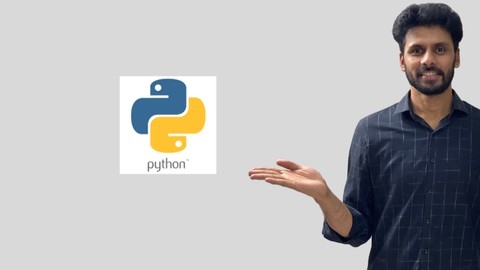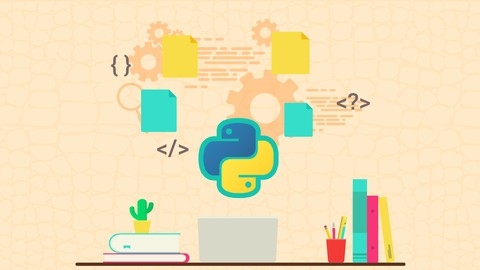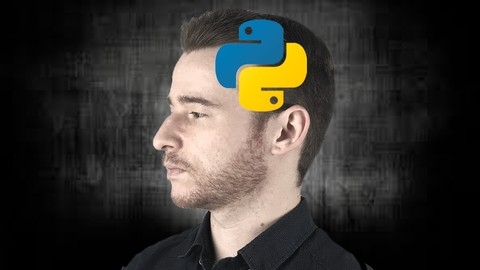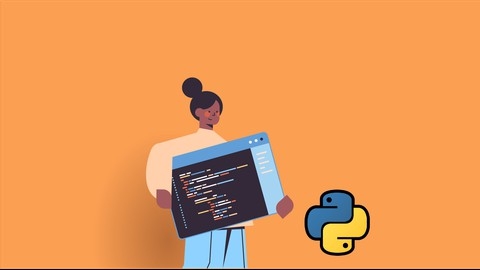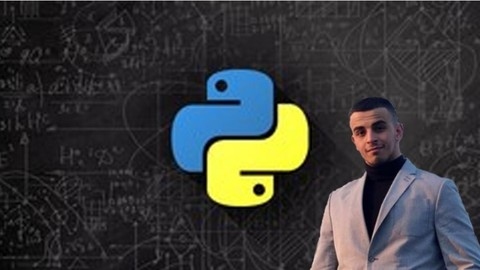Python is a versatile and widely-used programming language known for its clear syntax and extensive libraries.
Learning Python opens doors to various fields, including web development, data science, machine learning, and automation.
By mastering Python, you can build websites, analyze data, create intelligent applications, and automate repetitive tasks, empowering you with valuable skills for the modern tech landscape.
Finding the right Python course for beginners on Udemy can be challenging, given the abundance of options available.
You want a course that provides a solid foundation, clear explanations, engaging exercises, and practical projects to help you apply your newfound knowledge.
You’re looking for a course that not only teaches you the syntax but also helps you develop a true understanding of programming concepts.
For the best Python course for beginners overall on Udemy, we recommend Python for Beginners: Learn Python Programming (Python 3).
This course provides a comprehensive introduction to Python, covering fundamental concepts like variables, data types, operators, control flow, functions, and data structures.
Its structured approach, clear explanations, quizzes, and practice exercises make it an excellent choice for those starting their Python journey.
While Python for Beginners: Learn Python Programming (Python 3) is our top pick, Udemy offers other excellent Python courses for beginners catering to different learning styles and preferences.
Keep reading to discover more options, including courses focusing on specific applications of Python like web development or data science.
Python for Beginners: Learn Python Programming (Python 3)
The course begins with an overview and provides the necessary downloads, including solutions to practice exercises.
It guides you through setting up Python on different operating systems like Windows, Mac, and Linux.
You’ll learn how to write and run Python programs right from the start.
The course dives into strings, variables, functions, and printing, teaching you string methods, concatenation, and formatting.
After a quiz and practice exercises, it moves on to numbers, math operations, numeric functions, and comments.
Booleans and conditionals are covered next, allowing you to control program flow.
Functions are explored in-depth, covering function creation, parameters, and return values.
The course then introduces lists, a crucial data type, teaching you how to create, manipulate, search, slice, and loop through lists.
Exception handling and sorting are also included.
Dictionaries and tuples, two more essential data types, are explained with their creation, access, and manipulation.
Working with files is a vital skill, and the course covers opening, reading, writing, and handling exceptions when dealing with files.
Modules are introduced, enabling you to import and use external code in your programs.
Finally, a bonus lecture promises secret content, adding an element of intrigue.
The course follows a structured approach, with each section providing an overview, lectures, quizzes, practice exercises, and detailed solutions.
Python for Absolute Beginners
You’ll begin by installing Python and the Pycharm IDE, setting up your first project.
The course then dives into Python basics - variables, data types, math operators, and printing to the console.
You’ll learn how to work with strings, including escape sequences and string methods.
Along the way, you’ll tackle programming challenges like creating an asterisk triangle and implementing the famous Fizz Buzz problem.
Once you have the fundamentals down, the course moves on to functions - defining them, passing parameters, and working with modules.
You’ll build programs to calculate the volume of a rectangular prism, convert temperatures between Celsius and Fahrenheit, and find a vehicle’s miles per gallon.
Flow control is crucial in programming, so you’ll learn about comparison and boolean operators, if/else statements, and truthy/falsey values.
You’ll create a grade determiner program and convert numbers to their Roman numeral equivalent.
The syllabus covers loops in-depth - while and for loops, the range() function, and applying loops to solve problems like finding the sum of numbers, counting string characters, and calculating factorials.
You’ll continue exploring strings, lists, dictionaries, tuples, and sets.
Expect plenty of exercises on methods for each data structure.
Some highlights include building a string reverser, word counter, and working with dictionary methods like .keys(), .values(), and .update().
Throughout, you’ll be challenged with programming exercises to reinforce concepts.
The course is comprehensive for beginners, covering core Python skills needed for more advanced topics.
Python for beginners
This Python for beginners course takes you on a guided journey through the world of programming.
You’ll begin with the very basics, understanding what Python is and why it’s a favorite among both new and experienced programmers.
Setting up your coding environment with PyCharm is your first step.
You’ll quickly write your first Python script, learning about comments, which keep your code understandable, and indentation, a core part of Python’s structure.
You’ll discover different data types, the building blocks of all programs: numbers, true/false values (booleans), text (strings), lists, tuples, sets, and dictionaries.
You’ll learn how to use these data types with various functions and methods.
You’ll even work through examples like making a grocery checkout system.
You’ll then explore flow control—how to make your programs make decisions and perform actions repeatedly.
If, else, while, and for loops become your tools for controlling program flow.
You’ll use these to write code that can figure out even or odd numbers, calculate areas, and remove duplicate items from lists.
Functions, reusable blocks of code, are covered extensively, including recursion (functions that call themselves), lambda functions (small, anonymous functions), and decorators, which add extra functionality to your functions.
You’ll use these tools to write cleaner and more efficient code, even applying them to real-world scenarios like calculating BMI.
This course dives into object-oriented programming (OOP), a powerful way to organize your code.
You’ll learn about classes, objects, inheritance, polymorphism, and encapsulation—key OOP concepts that help build sophisticated programs.
You’ll even design a library management system to put these ideas into practice.
Exception handling is a crucial skill, and this course shows you how to deal with errors effectively, preventing your programs from crashing.
You’ll work with files, learning how to read and write data, a vital skill for any programmer.
Regular expressions, a tool for finding patterns in text, are introduced, which you’ll even use for web scraping.
You’ll also learn to manipulate dates and times, a common task in many programs.
The course moves into more advanced areas like threads, which allow your program to do multiple things seemingly at once.
You’ll explore networking concepts, learning how to communicate over the internet, creating simple servers and clients, and even sending emails.
You’ll work with databases like MySQL and Mongo, learning how to store and retrieve data.
Finally, the course gives you an introduction to popular Python libraries like NumPy, Pandas, and Matplotlib.
These tools are essential for working with large datasets, performing complex calculations, and creating visualizations, giving you a taste of what’s possible in the world of data science.
Learn to Code in Python 3: Programming beginner to advanced
You’ll begin this Python 3 journey by mastering the basics.
This means installing Python on your Mac or Windows computer, understanding how variables and statements work, and using the input function.
You’ll even build a kilometer-to-miles converter to put these new skills into action.
You’ll then explore different data types: numbers, strings, lists, tuples, dictionaries, and booleans — practicing with exercises for each.
Next, you’ll dive into core programming concepts like conditionals (if, elif, and else along with AND/OR operators) and loops (while and for).
You’ll also learn how to handle errors and validate data, making your code more robust.
You’ll explore functions and modules like Time and Matplotlib, learning how to visualize data effectively.
You’ll also learn how to interact with the web by sending HTTP requests to APIs and handling JSON data.
Plus, you’ll discover how to work with files, including reading data from Excel sheets.
From there, the course introduces you to machine learning.
Using the Iris dataset, you’ll explore the KNN and Logistic Regression models, learning how to split data for training and testing, and how to fine-tune your models for better results.
You’ll even learn to pick the best K value when working with the KNN model.
This section provides a practical introduction to a complex and in-demand field.
Finally, you’ll complete a final project to solidify your Python skills and demonstrate your newfound machine learning knowledge.
This project serves as an excellent bridge to intermediate Python concepts and practical application.
Programming with Python : HandsOn Introduction for Beginners
You start this Python journey by setting up your programming environment.
The course provides clear installation instructions for Windows, Mac, and Linux, so you can code regardless of your operating system.
You’ll then dive into the basics: variables, data types (like numbers and strings), and operators.
You learn how to work with these fundamental building blocks, forming a strong base for your coding skills.
You’ll discover how to use numbers, perform calculations, and manipulate text using string operations.
Next, you explore important data structures: lists, tuples, and dictionaries.
You’ll learn how to organize and access your data effectively using these structures.
You’ll master list operations, understand how tuples differ from lists, and appreciate the power of dictionaries for storing information using key-value pairs.
This leads you into conditional statements (if, elif, else) and loops (for and while), essential for controlling the flow of your programs.
You’ll learn how to make decisions in your code and repeat actions efficiently, solidifying these concepts with practical examples like checking divisibility by 3 and 7, or searching a book collection.
You then discover the power of functions, learning how to create reusable blocks of code with parameters and return values.
This makes your programs more organized and efficient.
You’ll practice writing functions, including one to find the largest of two numbers.
The course also covers exception handling, teaching you how to deal with errors gracefully, making your programs more robust.
You’ll then apply your new knowledge in a structured project, broken into manageable parts.
This project lets you integrate everything you’ve learned and build a functional program.
The course also includes a bonus lecture for further learning opportunities.
Apache Spark 3 - Spark Programming in Python for Beginners
This course starts with the basics of Big Data and Data Lakes, explaining the significance of Hadoop’s evolution and introducing Apache Spark and Databricks Cloud.
It then guides you through setting up your development environment, whether you’re using Mac or Windows, ensuring you’re ready to write and run Spark code effectively.
The curriculum dives into Spark DataFrames and Spark SQL, teaching you how to manipulate and query data through practical examples.
You’ll gain insights into the Spark Execution Model and Architecture, learning about cluster managers and execution modes to optimize your applications.
The course also covers the Spark Programming Model, focusing on Spark Sessions, project configuration, and unit testing, preparing you for real-world development scenarios.
Advanced topics include working with Spark’s Structured API Foundation, understanding Data Sources and Sinks, and mastering data transformations and aggregations.
This knowledge equips you to handle various data processing tasks with ease.
The capstone project offers a chance to apply your skills in a comprehensive project, including Kafka integration and setting up CI/CD pipelines.
Quizzes and tests throughout the course help reinforce your learning, while bonus lectures and archived content provide additional resources.
By the end of this course, you’ll have a solid understanding of Apache Spark and the skills to tackle data processing challenges confidently.
Python for Beginners with Examples
You’ll start with the basics, setting up Python, writing your first program, and using the command line and Python shell.
You’ll quickly move into core concepts like variables, strings, numbers, and math operators, working with lists, tuples, and dictionaries through practical exercises.
This foundational knowledge is reinforced through examples labeled “(E)” within the syllabus, allowing you to practice manipulating lists through indexing, slicing, and appending.
You’ll then learn about conditional statements (if, elif, else), enabling your programs to make decisions.
You’ll create custom functions, learning about parameters, return values, and how to include conditional logic within them.
File handling is a key skill you’ll acquire, learning to create, read, write, and append to text files using loops and conditional statements for more efficient processing.
This hands-on approach prepares you for real-world data manipulation tasks.
From there, you’ll explore for and while loops, string formatting, and working with dates and times.
You’ll discover the power of modules, libraries, and packages, learning how to install and use external tools like Django and Flask, popular frameworks for web development.
You’ll gain experience creating desktop and web applications using a GUI (Graphical User Interface).
Finally, you’ll learn to distribute your finished programs, making them available for others to use.
This comprehensive journey takes you from beginner to a programmer capable of building and sharing real-world applications.
Python for beginners - Learn all the basics of python
This Python for Beginners course starts with the fundamentals.
You’ll learn how to set up Python and create your first “Hello, world!” program.
You’ll then explore variables, working with various data types like numbers and strings, and using the print() and input() functions for interactive programs.
Two practice sections reinforce these core concepts, ensuring you have a strong base.
You’ll then move into essential programming concepts.
You’ll discover how to write clear code with comments, create reusable code blocks with functions and the return statement, and control program flow with if statements.
You’ll also dive into data structures like lists, tuples, and dictionaries, gaining practical experience organizing and manipulating data.
While and for loops will help you automate tasks, and you’ll apply these concepts in exercises like building a password-blocking application.
A basic encryption app project further solidifies your understanding.
Finally, the course introduces object-oriented programming with classes and objects, a powerful paradigm for structuring your code.
You’ll learn how to handle errors effectively, making your programs more robust.
You’ll even tackle a basic encryption application to cement your newfound skills.
With a final project involving an encryption app and a bonus lecture, you will have built a solid Python foundation, ready to tackle more complex projects.
